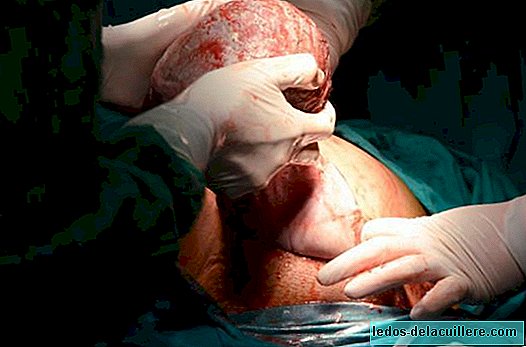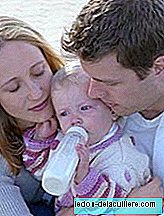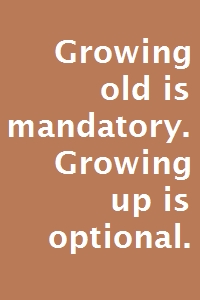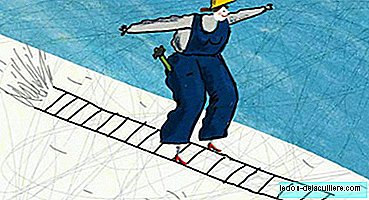In the 70s, caesarean section rates in hospitals were around 5%. From that moment that rate began to increase, reaching 15% in the 80s, to about 20% already in 2001 and standing at 21.88% in 2011, in public centers, and by 30 % in private. It seems that the numbers have stagnated, but it is not quite like that, since in previous years figures above 22% have been given.
The fact is that, by combining the figures of public hospitals with private ones, we realize that one in five women (24.9%) does not give birth vaginally, when it is estimated that only one in ten women would have to give birth by caesarean section.
In other countries the rates can be much higher, and in some centers, the worst, reach almost 50% of C-sections. Imagine that a person comes from the past, 50 years ago, and we explain that today there are places where only one in two, or one in three women, is able to give birth in a normal way.
WHO estimates that the cesarean section rate should be 10 to 15%
Well, in reality, WHO considers that in developed countries the number of C-sections should be between 5 and 10% of births, although they reach acceptable to reach 15%. This variability in the numbers responds to the fact that women now have the oldest children and that the weight of newborns, on average, seems to have increased.
If we talk about 10-15% we are saying that there are many, many, many women every year they are giving birth by caesarean section without actually being necessary. A caesarean section is more expensive for health than a normal delivery and, in addition, generates more expense because the complications are greater. That talking about money sounds fatal? Well let's not talk about it: giving birth by caesarean section makes more risk of death or problems in women, there is more risk for the baby and future pregnancies are put at risk.
If they are done it will be because they are necessary, right?
We have said that now there are surely more caesarean sections because the age at having the first child has increased, because babies seem to weigh more and also by a third factor: now there are more deliveries in proportion of the first child and less than seconds and third children . If in the past there were for example 500 deliveries, and half were of the second or third child, the percentage of caesarean sections was surely lower than now, that there may be 300 deliveries, but most women who give birth to their first baby (the second and third births, as you know, are usually easier).
This makes us think that it seems more logical to speak of a figure close to 15% and farther than 10%. Or not? Because if there are up to 22% of cesarean sections or 30% in private, isn't it because they are necessary?
The reality is no. Apparently, the protocols change a lot between centers and communities and it seems that according to the actual indications of caesarean section, 10% is correct. The rest of the caesarean sections are done because the delivery does not progress, because the previous birth was caesarean, because the child comes from buttocks, because it is premature, because they are twins, etc., causes that in many centers are treated with a vaginal delivery and in others with a caesarean section.
This clear difference could be seen just over a year ago, when we published the map of caesarean sections in Spain according to autonomous communities. In the Basque Country, the cesarean section rate was 12.6%. In Extremadura, 27.4%. Are women so different in northern Spain? I do not believe, because the Cantabrian neighbors reached 18.9%. It will be then that everything depends on the health centers, their protocols and the decisions, perhaps, of each professional. Without reaching 10%, if all of Spain equals 12.6% of the Basque Country we would be a model country in this regard.
My son was born by caesarean section, and if that is not why I don't know if he tells

When I talk about caesarean sections there is always someone who ends up telling me that if it is not for the caesarean section they did, he does not know if his son would have told him. I answer the same: my first son was born by caesarean section, although I don't know what would have happened if I hadn't been born that way, I don't even think about it. It was necessary? Well, it can be, I don't know. They considered that yes and we both, scared, accept. That's what caesarean sections are for, for help in complicated births and to save the life of the baby and the mother if an emergency arises.
However, if there is no such urgency or indication, there is no sense or reason to practice a C-section because it carries risks. The first thing is that the baby is separated from the mother as soon as she is born. This makes breastfeeding difficult because many children, when they reach the breast, are badly taken, and both the mother and the baby lose their skin for a little while, with affection and continuous contact.
The recovery is worse than giving birth vaginally, because the pain remains longer, to the point that there are women who have even difficulties to catch their babies. The risk of bleeding is also greater, sometimes requiring blood transfusion. It is also estimated that 10% of women are left with damage to the uterus, damages that may bother in the future, facing future pregnancies.
About 15% of women, sometimes even more, suffer infections after the intervention. One in three suffer complications such as fever, hemorrhages, urinary tract damage, bladder paralysis, etc.
If we talk about babies, they are known to have a higher risk of having breathing difficulties (Their lungs do not squeeze as they pass through the birth canal and they are born with too much amniotic fluid in the lungs), they average lower scores on the Apgar test and there are a greater number of babies who are admitted to intensive care.
The desire to give birth
Add to it all the desire of most mothers to give birth vaginally. When I have been able to talk to mothers who first had caesarean section and then gave birth, they come to sigh saying that "uff, at least I have been able to live what it is to give birth", as if they had an internal feeling that told them that they are not yet mothers of everything, or that they are less mother because their son "was taken".
If caesarean section was necessary, there is nothing more to talk about, you have to live with it and overcome it. But knowing that many are done without need and that many women feel that way when everything would be different if they had had a normal delivery, it increases the need for professionals across the state to look a bit, as I say, on how they do it in the Basque Country.
Photos | Thinkstock
In babies and more | How is the recovery after caesarean section? The first hour of life is sacred to the mother and the baby, vaginal delivery or caesarean section ?: Immune differences












